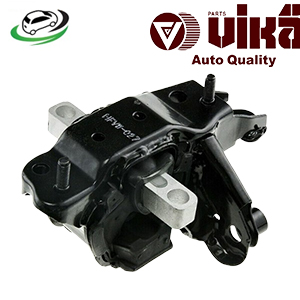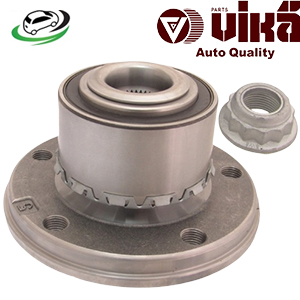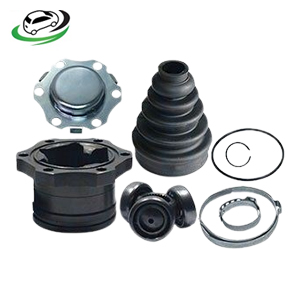-14%
Get Drive Shaft Joint Kit VW Bora (1J2) 1.6 16V / Bora (1J2) 1.6 FSI / Bora Variant (1J6) 1.6 16V / Bora Variant (1J6) 1.6 FSI 6Q0498103D
A drive shaft joint kit, often referred to as a CV (constant velocity) joint kit, is a crucial component in the drivetrain of a vehicle. It ensures the transfer of power from the transmission to the wheels, allowing for smooth and consistent motion, even when the wheels are turning or the suspension is moving. In this detailed overview, we will explore the function, components, types, benefits, signs of wear, and maintenance of drive shaft joint kits, all within 1000 words.
Function of a Drive Shaft Joint Kit
The drive shaft joint kit is essential for transmitting torque from the engine to the wheels, enabling the vehicle to move. The drive shaft, also known as a propeller shaft or half-shaft, connects the transmission to the differential or directly to the wheels in front-wheel-drive vehicles. The joints within this shaft allow for flexibility and movement, ensuring that power is transmitted smoothly even as the wheels turn or the suspension moves.
In most vehicles, particularly those with front-wheel drive, the drive shaft joint kit includes CV joints that allow the drive shaft to transmit power at various angles without losing velocity. This is especially important during steering or when the vehicle encounters bumps and dips in the road.
Components of a Drive Shaft Joint Kit
A typical drive shaft joint kit includes several key components that work together to ensure smooth and efficient power transfer:
- CV Joint:
- Function: The CV joint is the most critical component of the drive shaft joint kit. It allows the drive shaft to transmit power at a constant speed regardless of the angle between the transmission and the wheels.
- Types: The two most common types of CV joints are the Rzeppa joint (often used in front-wheel-drive vehicles) and the tripod joint (used in some rear-wheel-drive and four-wheel-drive vehicles).
- Boot:
- Material: The boot is typically made from rubber or thermoplastic.
- Function: The boot surrounds the CV joint, protecting it from dirt, debris, and moisture. It also contains the grease that lubricates the joint, ensuring smooth operation.
- Grease:
- Function: Grease is packed inside the CV joint and boot to reduce friction and prevent wear. The grease also helps dissipate heat generated by the movement of the joint.
- Clamps:
- Function: Clamps are used to secure the boot to the CV joint and drive shaft, ensuring that the grease remains inside and contaminants stay out.
- Drive Shaft:
- Material: Drive shafts are typically made from steel or aluminum for strength and durability.
- Function: The drive shaft transmits power from the transmission to the wheels. The CV joints at either end allow the shaft to flex and accommodate the movement of the wheels.
Types of Drive Shaft Joints
Drive shaft joints come in different types, depending on the design and requirements of the vehicle’s drivetrain. The two main types are:
- Fixed CV Joints:
- Design: Fixed CV joints, often found at the wheel end of the drive shaft, maintain a constant speed regardless of the angle between the transmission and the wheel. The Rzeppa joint is a common type of fixed CV joint.
- Advantages: These joints are designed to handle the full range of motion required during steering and suspension movement, providing consistent power transfer.
- Plunge CV Joints:
- Design: Plunge CV joints, typically located at the transmission end of the drive shaft, can slide in and out to accommodate changes in the length of the drive shaft as the suspension moves. The tripod joint is a common type of plunge CV joint.
- Advantages: These joints allow for the necessary axial movement of the drive shaft, ensuring smooth power transfer even as the suspension compresses and rebounds.
Benefits of a Drive Shaft Joint Kit
A well-functioning drive shaft joint kit offers several benefits that contribute to the overall performance, safety, and comfort of a vehicle:
- Smooth Power Transfer:
- Consistent Velocity: CV joints are designed to maintain a constant velocity while transmitting power, even when the wheels are turning or the suspension is moving. This ensures that power is delivered smoothly to the wheels, resulting in a consistent driving experience.
- Improved Handling:
- Steering Performance: The flexibility of CV joints allows for efficient power transfer during steering, which is crucial for maintaining control of the vehicle. This results in better handling, particularly when navigating tight corners or uneven terrain.
- Increased Durability:
- Protection Against Wear: The boot and grease protect the CV joint from dirt, debris, and moisture, reducing wear and extending the life of the joint. This durability is essential for the long-term reliability of the drivetrain.
- Reduced Maintenance Costs:
- Longer Lifespan: By preventing contamination and ensuring proper lubrication, a well-maintained drive shaft joint kit can reduce the need for frequent repairs or replacements, ultimately lowering maintenance costs.
- Enhanced Safety:
- Stable Drivetrain: A properly functioning drive shaft joint kit ensures that the drivetrain operates smoothly and efficiently. This stability is crucial for maintaining control of the vehicle, particularly during high-speed driving or in challenging road conditions.
Signs of a Worn or Failing Drive Shaft Joint Kit
Over time, the components of a drive shaft joint kit can wear out due to exposure to harsh road conditions, extreme temperatures, and mechanical stress. Recognizing the signs of a failing drive shaft joint kit is essential for maintaining vehicle safety and performance:
- Clicking or Popping Noises:
- Symptom: A common sign of a worn CV joint is a clicking or popping noise when turning, especially at low speeds. This noise indicates that the CV joint is no longer functioning smoothly and may be close to failing.
- Vibration While Driving:
- Symptom: A worn or damaged drive shaft joint can cause vibrations in the vehicle, particularly at higher speeds. These vibrations may be felt in the steering wheel or throughout the vehicle and can indicate an imbalance or misalignment in the drive shaft.
- Grease Leaks:
- Symptom: If the boot protecting the CV joint is torn or damaged, grease may leak out, leading to contamination of the joint. This can result in premature wear and eventual failure of the CV joint.
- Loss of Power:
- Symptom: A failing drive shaft joint can lead to a loss of power being transmitted to the wheels. This may manifest as a sluggish response when accelerating or difficulty maintaining speed.
- Visible Damage:
- Symptom: During a visual inspection, you may notice cracks, tears, or other damage to the boot or joint. Any visible damage should be addressed immediately to prevent further issues.
Maintenance and Replacement
Regular maintenance and timely replacement of the drive shaft joint kit are essential for ensuring the long-term reliability and performance of the vehicle’s drivetrain:
- Inspection Interval:
- Regular Checks: It’s advisable to have the drive shaft joint kit inspected during routine maintenance, such as oil changes or tire rotations. Early detection of wear or damage can prevent more severe issues and costly repairs.
- Boot and Grease Maintenance:
- Protective Measures: Ensuring that the boot is intact and properly sealed is crucial for protecting the CV joint from contamination. If the boot is damaged, it should be replaced immediately, along with fresh grease, to prevent further wear.
- Replacement of CV Joints:
- When to Replace: If the CV joint itself is worn or damaged, it should be replaced promptly to avoid complete failure, which could leave the vehicle inoperable. Replacement is often necessary when symptoms like clicking noises or vibrations are present.
- Professional Installation:
- Complexity: Replacing a drive shaft joint kit can be complex, requiring specialized tools and knowledge of the drivetrain. It’s recommended to have a professional mechanic perform the replacement to ensure proper installation and alignment.
Follow us on Facebook for more parts.



